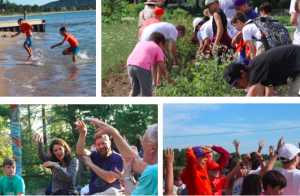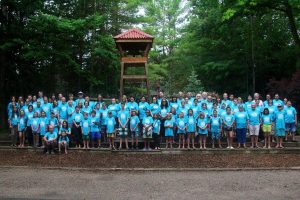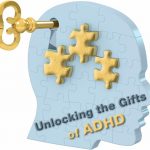In his ADDitude Magazine article on “How to Slow Down Your Racing ADHD Brain,” Dr. Hallowell says, “Telling someone with ADHD to slow down is like telling the sun not to shine and the tide not to rise. The love of speed is built into our DNA. If our bodies are not moving a mile a minute, our minds are, ideas popping up like popcorn at the movies.”?
Your Racing ADHD Brain and the Need For Speed
We get off on speed, and we abhor slowing down. I hate it when I’m in the checkout line at the supermarket, and I get stuck behind a person who wants to pay with a check. Oh, the agony. Producing identification, the cashier writing it down, the customer putting it away, all of which seems to take forever. I stand and stew. People with ADHD can be impatient, and to use such time imaginatively would require something we don’t have: patience.
Read more and get practical tips from Dr. Hallowell on slowing down your ADHD brain in ADDitude.
Dr. Hallowell’s “Race Car Brain” analogy:
The current medical model for ADHD is deficit-based, as the name itself demonstrates: attention deficit hyperactivity disorder. While the medical model is preferable to its predecessor, which I call the “moral model” by which a child was labeled “bad,” “wayward,” “lazy,” or even “incorrigible,” the medical model slaps a pathological diagnosis upon the child, and a pretty miserable-sounding one at that.
Who wants to have a “deficit disorder”? How much enthusiasm can you expect someone to muster to deal with that? It is no wonder that many children reject the diagnosis and refuse to accept the label. They’d prefer to fail on their own then cop to a plea of “deficit disorder” to get the help they need.
Instead, I recommend embracing a strength-based model, a model that acknowledges while there is a potentially serious downside to ADHD, there also is a potentially spectacular upside to it as well.
Dr. Hallowell’s Strength-based model:
The model I use when I present the diagnosis to children is as follows. I say to whomever it is I am giving the diagnosis of ADHD, “I have great news for you.” At that the child, and his parents, look up, as this is not what they’d been expecting to hear.
“I’ve learned a lot about you,” I go on. “I’ve taken your history, and I’ve read what your various teachers have had to say about you. As you know, we’ve also done some tests. After putting all this information together, I’m now able to tell you that you have an awesome brain.”
“Your brain is very powerful. Your brain is like a Ferrari, a race car. You have the power to win races and become a champion.” “However,” I continue, “you do have one problem. You have bicycle brakes. Your brakes just aren’t strong enough to control the powerful brain you’ve got. So, you can’t slow down or stop when you need to. Your mind goes off wherever it wants to go, instead of staying on track. But not to worry, I am a brake specialist, and if you work with me, we can strengthen your brakes.”
Strengthening Brakes
Which is true. Treating ADHD is all about strengthening brakes. The inhibitory systems in the brain, which is to say the brakes, do not work well enough to control it. So, it can’t inhibit incoming stimuli, hence is distractible, nor can it inhibit outgoing impulses, hence is impulsive and hyperactive.
But consider also that each of those negative symptoms has a corresponding positive one. The flip side of distractibility is curiosity, a valuable quality indeed. The flip side of impulsivity is creativity, a hugely valuable asset. You can’t be creative if you aren’t somewhat disinhibited. And the flip side of hyperactivity is a quality I’m grateful at my age to have. It’s called energy.
As a brake specialist, I can help these children, and their adult counterparts, strengthen their brakes.
I advocate embracing the strength-based model. I believe this is so important. When a child is disruptive you can simply say, “Joey, your brakes are failing you now.” This sets a limit, but it does so in a non-shaming way. Joey has already had it explained to him that he has a race car brain with bicycle brakes, and he has already accepted you, the parent, as someone who is going to help him strengthen his brakes.
Other interventions you can make in your child’s environment:
- setting up predictable schedules and rules;
- breaking down large tasks into small ones;
- balancing structure with novelty, so that when your child gets overstimulated you introduce structure, and
- when your child gets bored you introduce novelty;
- making sure your child gets play time and frequent “brain breaks.”
Most importantly, make sure your child knows you love him or her and are on his side (or hers). Make sure you and your child understand ADHD in the same way: race car brain, bicycle brakes.
Just embrace the strength-based model and use it every day. Helping your ADHD child excel takes a lot of time and energy. But your energy is much better spent if you think of ADHD not as a disability but as a gift to unwrap.
Dr. Hallowell describes his “race car” brain analogy is this VIDEO.
Learn more about ADHD for parents, HERE
and ADHD for Adults HERE.
 It’s like none other. It provides families with a fascinating week of learning, connecting, adventuring, reflecting and community-building. All members of the family are invited. Camp is suitable for siblings who do not have ADHD too.
It’s like none other. It provides families with a fascinating week of learning, connecting, adventuring, reflecting and community-building. All members of the family are invited. Camp is suitable for siblings who do not have ADHD too.







